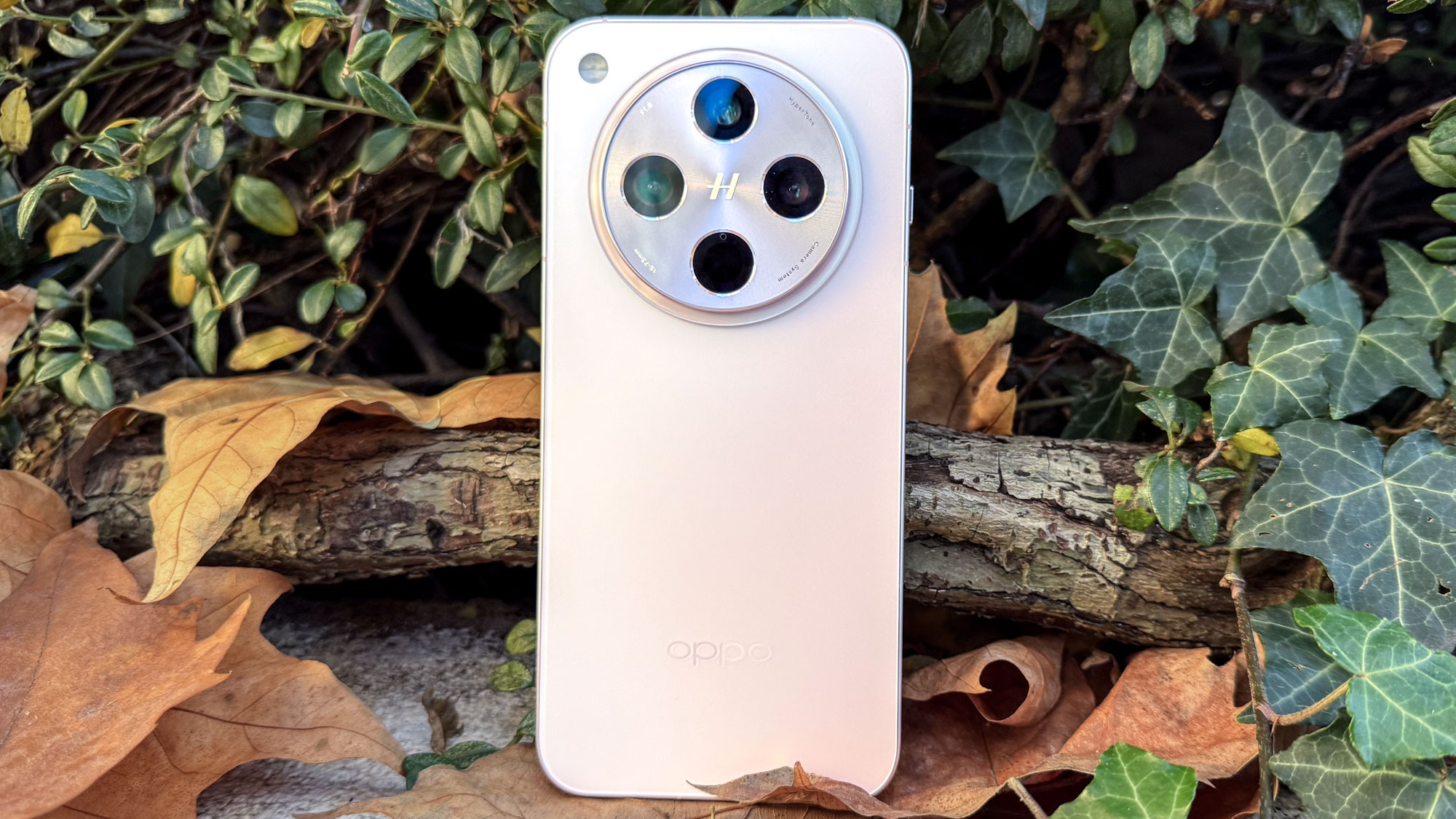
When I think of smartphones, devices from Oppo rarely comes to mind, given the phone maker's primary focus on its home market of China. However, the Oppo Find X8 proved to be a pleasant surprise with the kind of features you like to see in an entry-level flagship.
With the Find X8, Oppo seems to be concentrating on AI capabilities and the phone's camera setup — understandable given all the attention AI features are commanding at the moment between the iPhone's Apple Intelligence and the Galaxy AI capabilities onboard Samsung's flagships. And cameras, as ever, remain a crucial factor in which smartphones we buy.
If we rated a phone simply on cameras alone, the Oppo Find X8 would go a long way toward cementing Oppo's place among the top phone makers. But there's more to a phone than a single feature, and as we'll find out in this Oppo Find X8 review, some of those other things ultimately keep this device from ranking among the best phones available.
Oppo Find X8 review: Specs
Oppo Find X8 review: Price and availability
All we know about the Oppo Find X8 is that it's unlikely to appear in the U.S., given that Oppo doesn't bring its phones to that part of the world. But unlike its more expensive sibling, Oppo Find x8 Pro, the phone may not arrive in the U.K., either. So far, Oppo seems content to release this phone only in China and a few other markets in Asia.
Using the Indonesian price of the phone, you'd pay around $860/£690/AU$1,385 for the 12GB/256GB version of the Oppo Find X8. A 16GB/512GB model costs around $985/£785/AU$1,585. Essentially, we're talking a phone that's in the ballpark of the Pixel 9 Pro or the Galaxy S24 Plus, and a device that sells for about £300 less than the £1,049 Oppo Find X8 Pro.
There are three color options available for the Oppo Find X8: Star Grey, Space Black and Shell Pink.
Oppo Find X8 review: Design & Display

The Oppo Find X8 looks pretty generic from the front. You get a 6.59-inch display with a punch-hole in the upper middle of the screen housing the front camera. I find this to be the worst part of the screen design, as I feel it takes away from the display, which as we'll see is one of the Find X8's stronger points.
Oppo has taken a note out of Apple’s book, using a flat-sided design that features a screen lock and volume button on its right. Special mention should be made for the 1.45mm bezel on the side of the phone, which is the thinnest yet seen on an Oppo phone.
Sadly, the Quick Button found on the Oppo Find X8 Pro ins't included with this phone. Instead, you've got an alert slider to quickly set the phone to Silent, Vibrate and back to full volume with a simple push. While that might feel a bit old-fashioned when compared to Apple’s Action button, it does its job. I like the feel of the slider, however, as there's something to be said about a switch. When the phone isn’t in a case, though, it can be a bit easy to accidentally turn the phone to silent or vibrate.

The really interesting design aspect is the back camera, where Oppo has worked to make the Find X8's camera housing slightly less obvious. While it is certainly still noticeable in the pocket, the edges have been smoothed down a bit to make it more streamlined, as well as optimized stacking to make the lenses appear more symmetrical. It's a nice look, and Oppo has cut the camera bump down by about 40%, but the hard edges are still pretty noticeable.
Oppo has designed the Find X8 using what it calls Armor Shield Construction. This method aims to be more robust by combining reinforced glass, aluminum alloy and shock absorption. As a result, the Oppo Find X8 carries both military-grade and Swiss SGS certification. It also boasts IP68 and IP69 water resistance ratings, meaning it can withstand dunks in water as well as jet streams of liquid.
The display showed off videos fantastically, with no real stuttering or other issues. Unfortunately, when it comes to brightness, we haven't been able to test it in our lab to compare it to other phones. Oppo has claimed that the phone has a peak brightness of 4,500 nits, which would make the screen brighter than both the Pixel 9 Pro and Galaxy S24 Plus. However, I don't know how accurate that is, as while it might appear brighter than the Galaxy, I found that the Pixel looked much brighter.
Oppo Find X8 review: Cameras
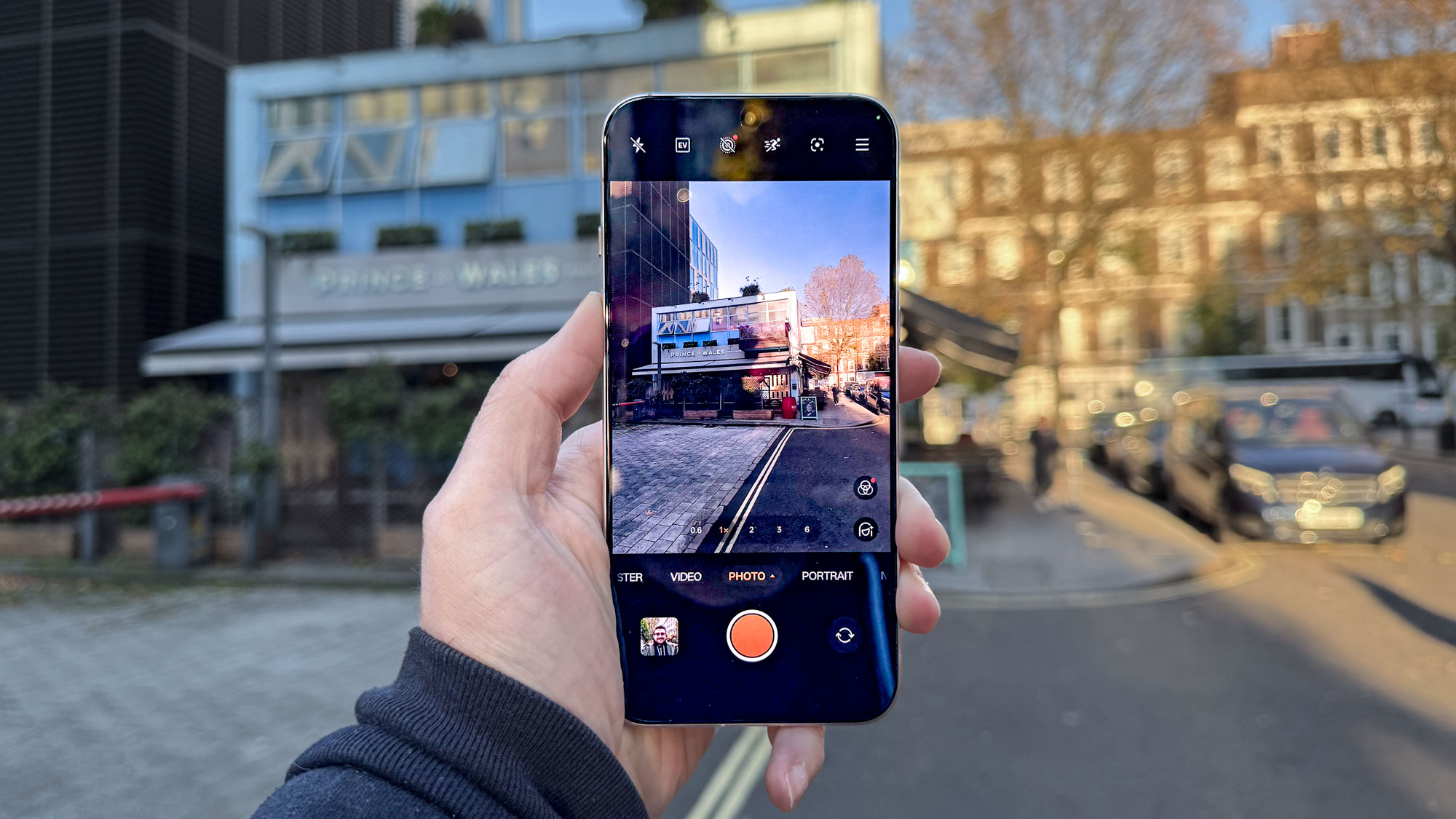
The Oppo Find X8 comes with three cameras on the back of the phone, a 50MP wide camera, a 50MP ultrawide shooter and a 50MP telephoto lens. All of the cameras worked fantastically in my testing, and are easily the main selling point of the phone.
It's worth noting that Oppo adds watermarks to photos be default. You'll need to turn off that setting you start taking pictures with the phone, unless you want your images covered with Oppo branding.
To test the main camera, I put the Oppo Find X8 up against the Galaxy S24. Personally, I prefer the S24's shot in this comparison featuring a statue, mainly because the overall brightness is limited, leaving less shine from the sun. I also think the colors seem a bit deeper in the S24 version. The Find X8 shot borders on being over-exposed.
The opposite happened when I compared the Oppo Find X8's 50MP ultrawide camera with the Pixel 9 Pro when taking a photo of a bridge over a canal. Here, the Oppo was slightly darker, although the actual quality of the images was pretty even. I would say that the Pixel 9 Pro does seem slightly more defined, but the difference is pretty negligible.
The telephoto lens is where the Oppo Find X8 really comes into its own. The Paddington statue looks a lot brighter in the Oppo image, and the shadows blend nicely, giving it an impression of shape without overpowering the image. In contrast, the Galaxy S24 photo looks a lot darker, which does make the colors that are there pop a bit more.
Aside from the three cameras on the back, the Oppo Find X8 also has a 32MP selfie camera. As you can see in the selfie above, it offers much warmer colors than the Galaxy S24 while softening my face. I also like how the find X8 doesn't blur the background quite as much as the S24, which just looks a bit more natural to me.
The Oppo Find X8 also has a Nightshoot mode and it is leagues above the Pixel 9 Pro. If you look at the comparison images, you can see that the Oppo has a much higher range of colors and uses shadows to create a sense of contrast, rather than simply trying to remove them.
Finally, there's the AI telescope zoom on board the Oppo Find X8. It allows the phone to zoom in to an incredible degree, while also improving the image. You can really see the difference between the Oppo Find X8 and the Galaxy S24 with the lines being much more defined and easy to read in the Oppo shot.
Overall, the Oppo's cameras are impressive in so small a phone, but the selfie camera and Nightshoot are easily the best options on the device.
Oppo Find X8 review: Performance
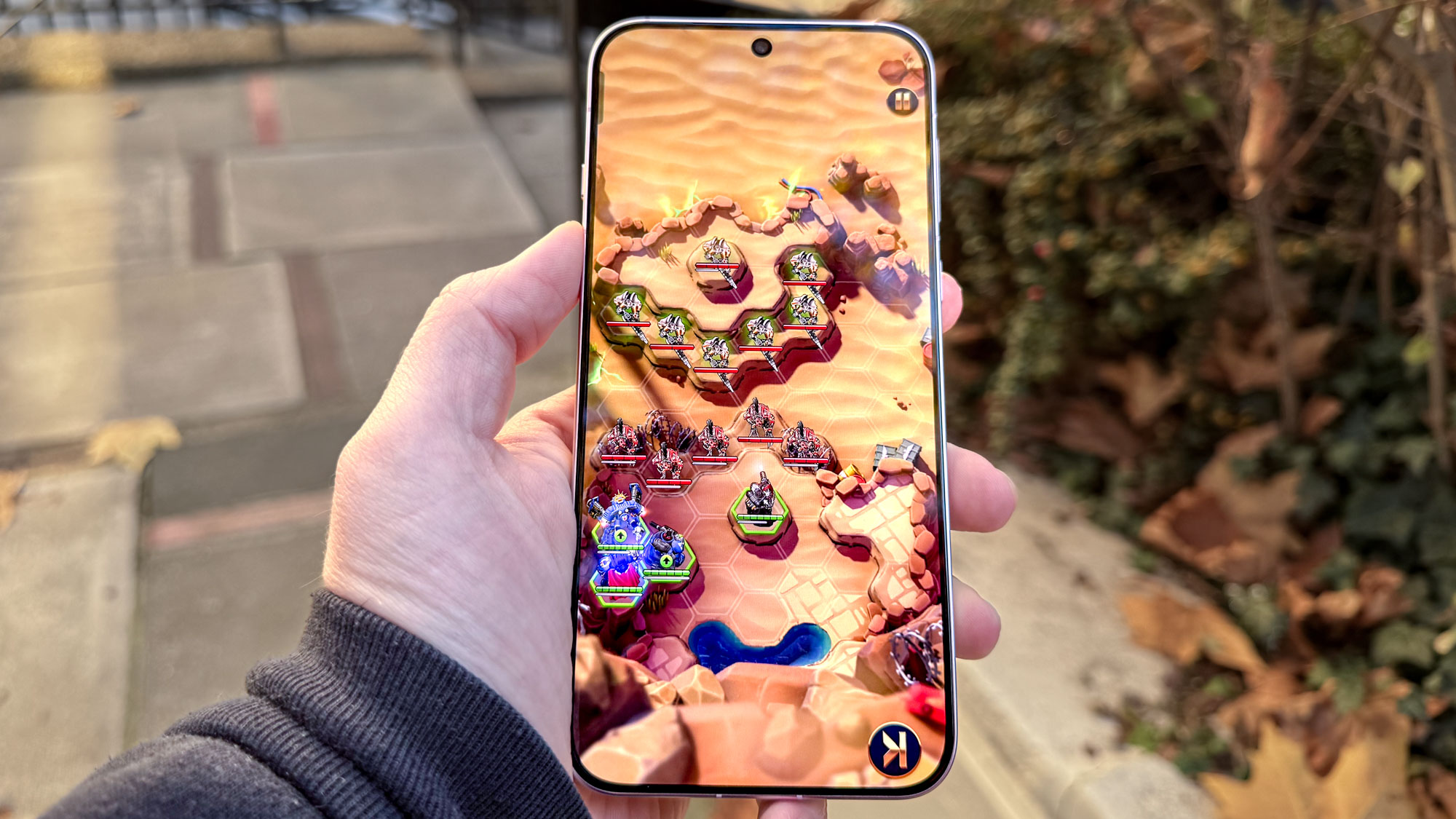
Instead of the Snapdragon 8 chipset that generally powers the best Android phones, Oppo has turned to MediTek's Dimensity brand of chips, specifically the Dimensity 9400. The result is impressive performance, when compared to the Snapdragon 8 Gen 3 silicon that shipped late last year and powers phones like Samsung's Galaxy S24 lineup.
The Dimensity chip inside the Oppo Find X8 beats out other Android devices in the both the single and multicore versions of Geekbench, a test that measures CPU performance. It trails the iPhone 16 and its A18 chip in Geekbench's single-core test. The MediaTek's reign as a top performer could be short-lived given the arrivlal of the Snapdragon 8 Elite and the 2025 Android phones likely to use that system-on-chip, but you still get some impressive processing muscle from the Oppo Find X 8.
Test scores are only a part of the equation, the real test is how the phone runs in real-world scenarios. I tested the phone on two different games, Genshin Impact and Warhammer 40,000: Taciticus. The Find X8 could run both demanding games quickly and seamlessly, with no real load times to complain about. I found the same thing while searching the web on the Find X8, with pages loading with no wait time outside of what I would expect from my internet service.
Oppo Find X8 review: Software and special features
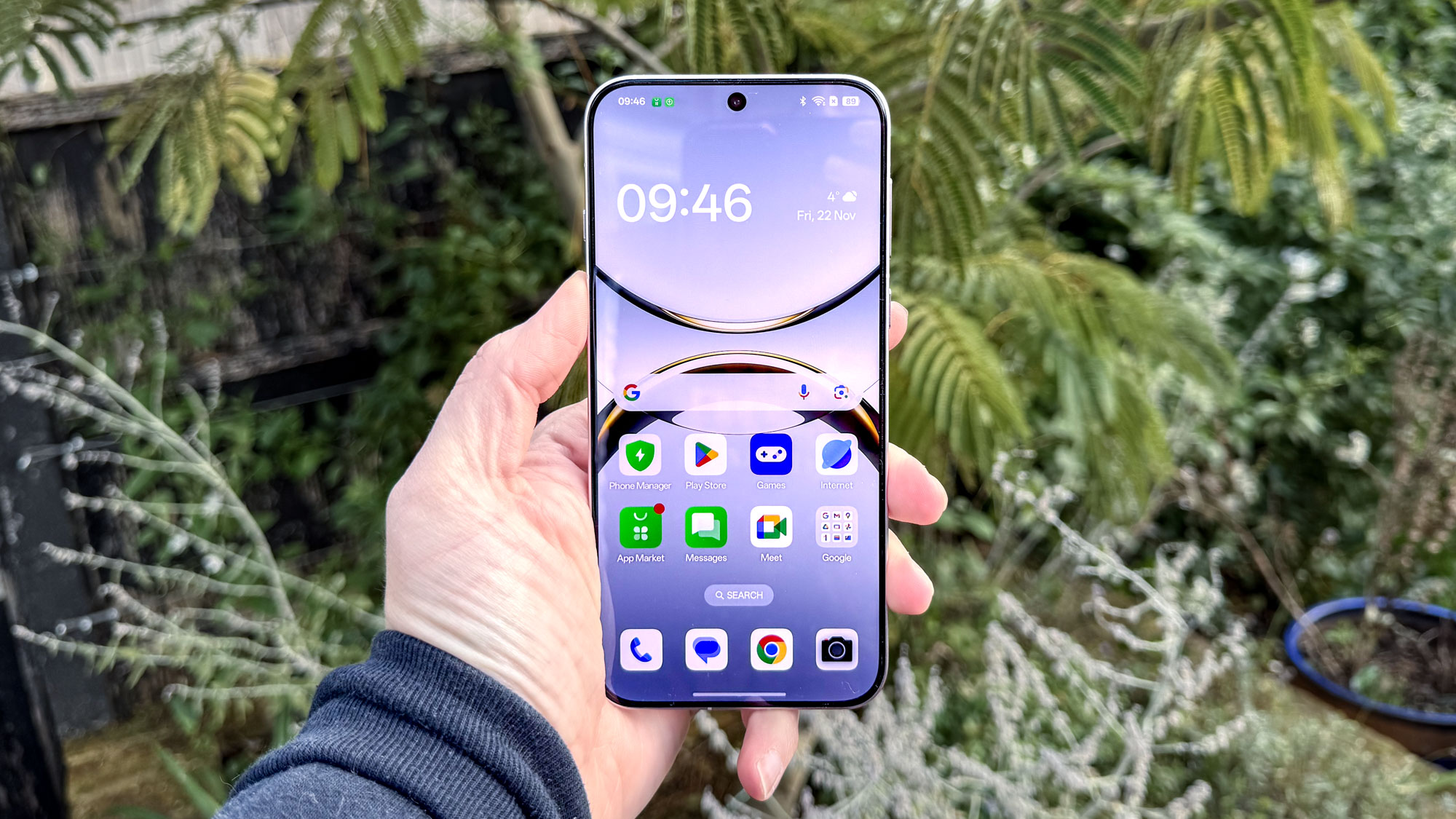
The Find X8 runs on the Android-based ColorOS 15, which offers users a full five years of full updates with an additional year of security support. While certainly more generous support than what Android phone makes offered a few years ago, Oppo's policy falls short of the seven years that Google and Samsung now offer for their flagship phones (and the midrange Pixel 8a in Google's case). Still, that's really going to impact you, only if you plan on going more than five years before your next phone upgrade.
For the most part, ColorOS 15 offers what you expect from a variation of Android. You’ll have access to the wildly popular Circle to Search feature, as well as more than 800 new animations, AI photo editing and Touch to Share. Out of these, the most novel capability has to be Touch to Share, which aims to make it easier than ever to transfer data from the iPhone to the Find X8.
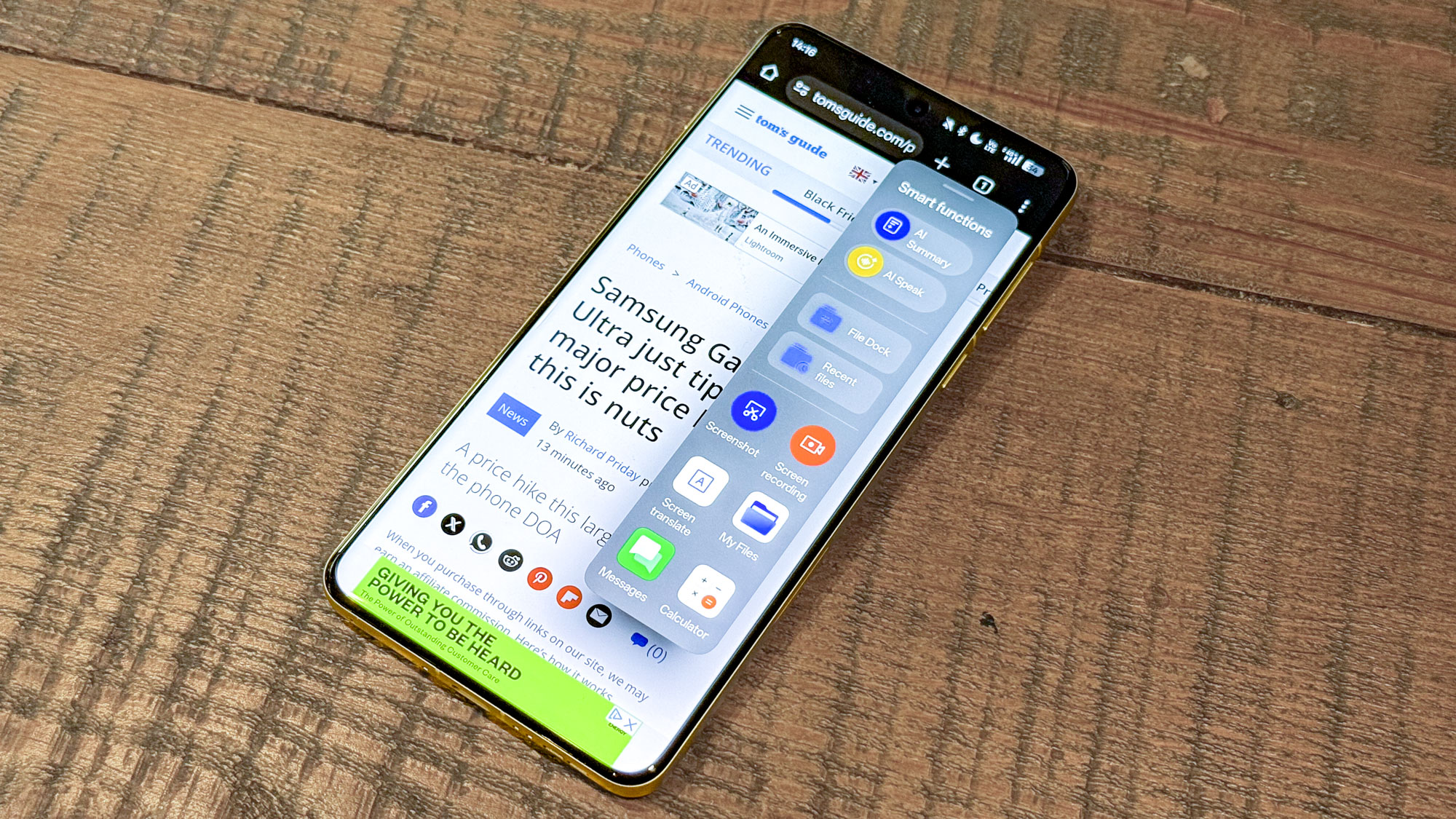
The real selling point of most modern phones is undoubtedly the AI, and the Oppo Find X8 comes with a full AI toolbox, including AI Summary, Speak and Writer. The phone also comes with Google Gemini installed on the device. It can generate summaries of hours of audio thanks to the Gemini-powered recorder, and it recently got access to Google Live. Finally, the Oppo Find X8 has an improved Notes and documents app.
Oppo has introduced a wealth of AI camera features, which all come with fancy names but turn out to deliver pretty standard photo-editing capabilities. The Oppo Find X8 can enhance low-quality images to make them look crisper, unblur images and remove reflections with only a few taps. Finally, there is an AI studio that allows you to create images using only a single picture — turning you into a 3D cartoon or as a felted doll. All of these are easy to use, and it’s nice to see them included, but I wouldn’t buy a phone just to have access to these tools.
All the features work as you would expect, and I like how easy it is to access the AI features thanks to Find X8's Smart Sidebar feature. This is essentially a toolbar that you can access through the Accessibility tab in settings. Once activated, you only need to swipe at the top of the screen to see apps you can access. Not only that, Smart Sidebar also offers the odd suggestion regarding what tools you might want depending on what you're looking at.
Oppo Find X8 review: Battery and charging
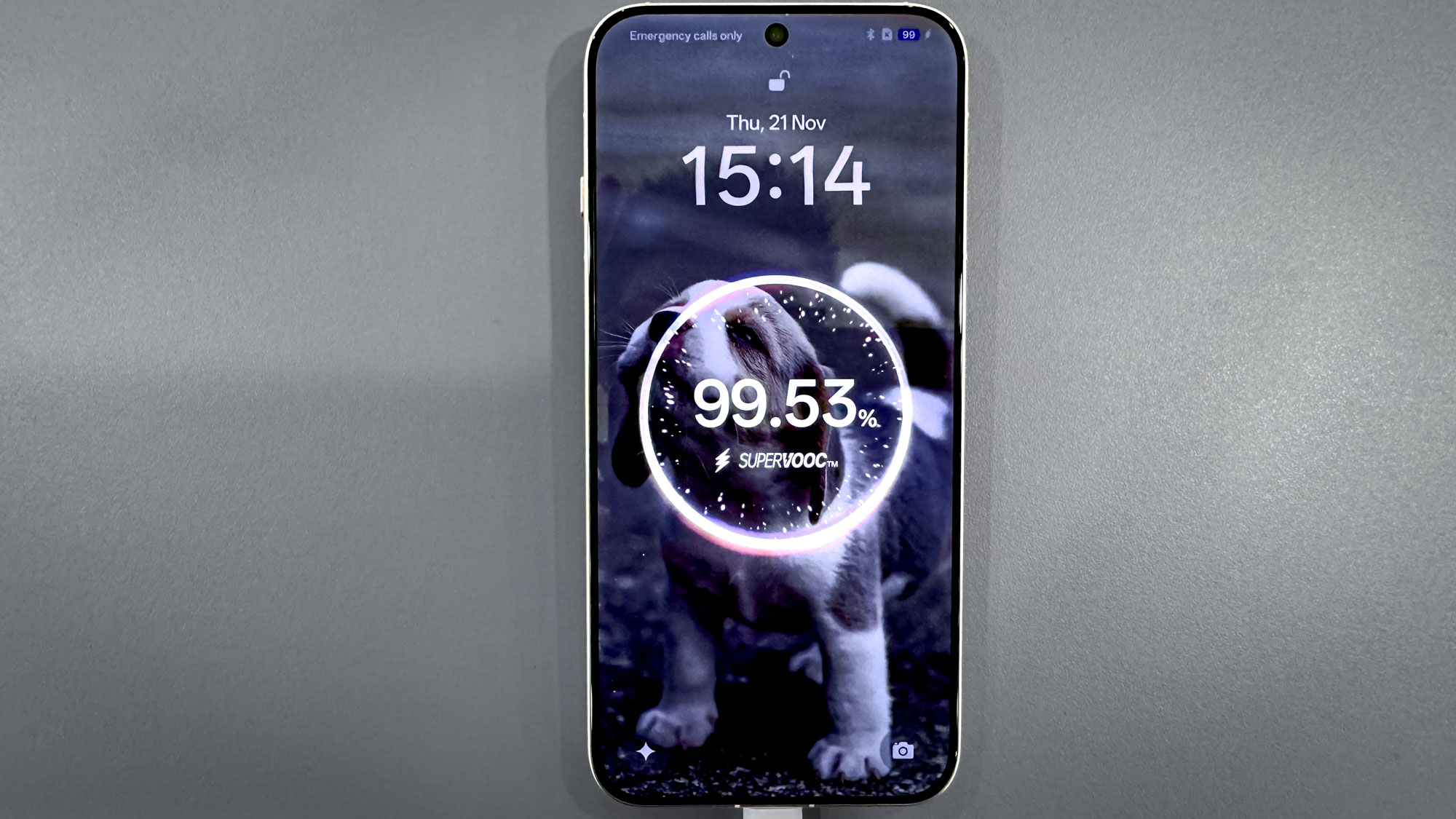
One of the most impressive things I found when using the Oppo Find X8 was just how long-lasting the phone really is. The Oppo Find X8 runs on a 5,630 mAh battery, which is bigger than the 4,000 mAh battery in the Galaxy S24 and the 3,561 mAh battery in the iPhone 16 .
In terms of real-life usage, you’re looking at an impressive battery life compared to other models. For instance, I played a video on the device for 3 hours to test how much the battery drained, and the Find X8 only lost about 10% of its overall charge.
When you do need to charge the phone, the Find X8 supports 80-watt wired charging which easily fills up the phone's battery in a little less than an hour. The Find X8 also offers 50W wireless charging and 10W reverse wireless charging. That's a decent charging rate, so you won’t be waiting for long for your phone to get ready to go. However, we’d recommend checking out our piece on how to keep your Android battery healthy to keep it running for as long as possible.
Oppo Find X8 Review: Verdict
There’s a lot that I like about the Oppo Find X8, but my issue with it is that the phone simply doesn’t stand out to me. The phone's look feels pretty generic, and while the camera layout has a certain charm to it, it's still a bit of a hindrance when you hold it. Meanwhile, the AI features are nice to see, but again they all feel a bit by the numbers.
That said, the cameras perform very well, and the performance measures up against any phone you can name. All that's great — if you can actually buy the Find X8. Right now, outside of certain countries in Asia, that's not an easy thing to do. Should Oppo change that, this phone is a lot more compelling, but right now, it's more of a hint at the kind of phone we could be getting instead of one we have to buy.







